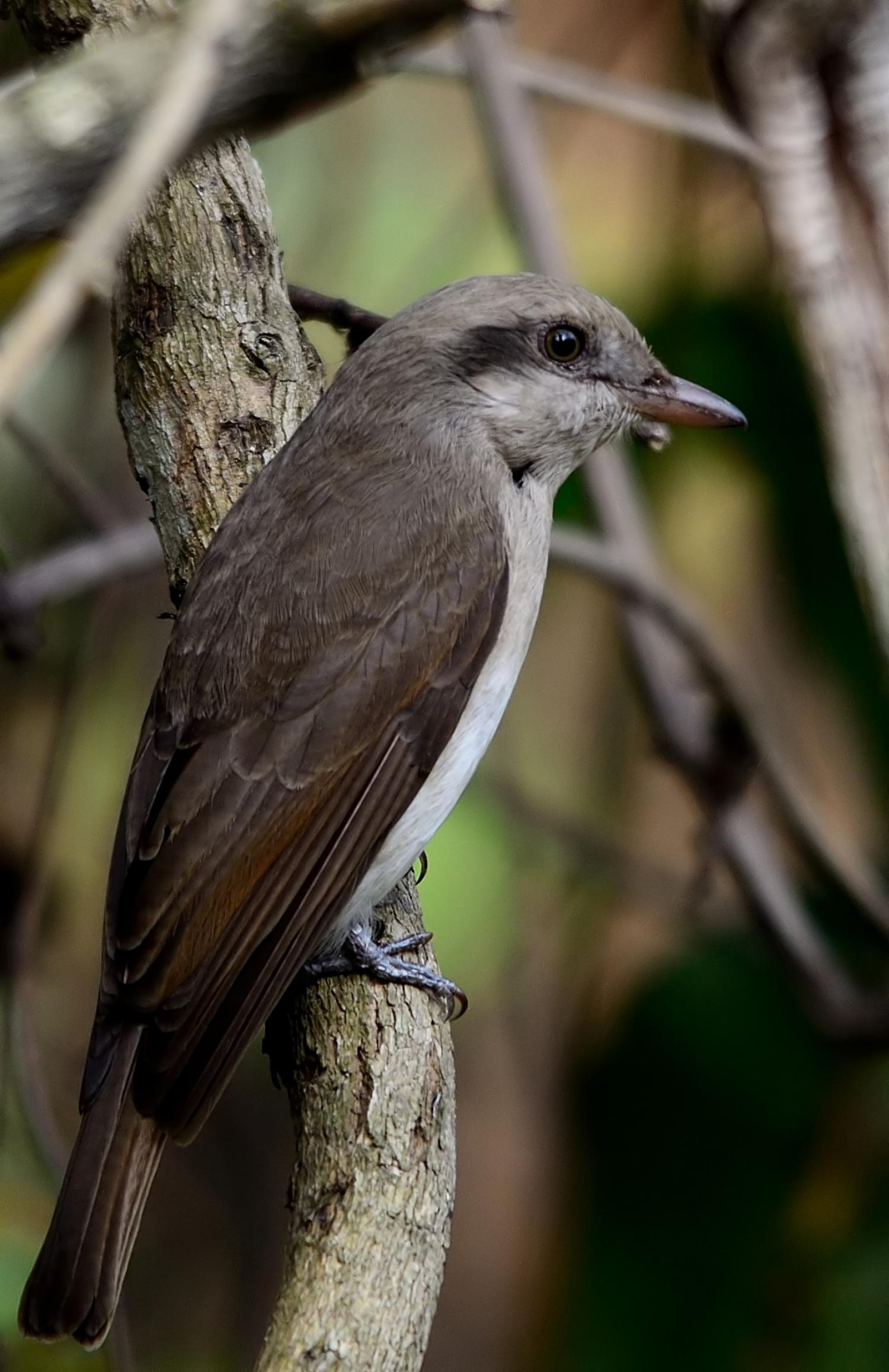The Woodshrike: Tephrodornis Gularis
Share
The Woodshrike, scientifically known as Tephrodornis gularis, is a fascinating bird belonging to the family Campephagidae within the order Passeriformes. This species is primarily found in the coastal areas of southwestern and extreme southern Sumatra, as well as Java. Known for its striking appearance and unique behaviors, the Woodshrike is a subject of interest for ornithologists and birdwatchers alike.

Taxonomy
The Woodshrike was first described by Thomas Stamford Raffles in 1822, under the name Lanius gularis. The type locality was initially identified as Sumatra, specifically restricted to Benkulen by Kinnear and Robinson in 1927. The species is classified under the suborder Oscines, which includes songbirds known for their complex vocalizations.
Physical Characteristics
The Woodshrike is a medium-sized bird, typically measuring around 20-25 cm in length. It exhibits a distinctive plumage that varies slightly between males and females. Males generally have a more vibrant coloration, with a combination of gray, white, and black feathers, while females tend to be more subdued in color. The bird's sharp, hooked bill is adapted for its predatory lifestyle, allowing it to catch insects and small vertebrates effectively.

Habitat
The Woodshrike inhabits coastal areas, preferring forest edges, mangroves, and open woodlands. It is often found in regions with dense foliage, which provides ample cover and hunting opportunities. The bird's range extends across the southwestern and extreme southern parts of Sumatra and into Java, where it thrives in humid tropical climates.

Diet
As a carnivorous bird, the Woodshrike primarily feeds on insects, including beetles, grasshoppers, and caterpillars. It is also known to consume small vertebrates, such as lizards and small birds. The Woodshrike employs a unique hunting technique, often perching on a high branch and scanning the ground for prey. Once it spots a target, it swoops down to catch it with precision.

Behavior
The Woodshrike is known for its solitary and territorial behavior. Males are particularly vocal during the breeding season, using a series of melodious calls to establish their territory and attract mates. These birds are also known to engage in aggressive displays to ward off intruders. Their flight is characterized by short, direct bursts, often interspersed with gliding.
Reproduction
The breeding season for the Woodshrike typically occurs during the wet months, when food is abundant. Nests are usually built in dense foliage, providing protection from predators. The female lays a clutch of 2-4 eggs, which she incubates for about two weeks. Both parents participate in feeding the chicks once they hatch, ensuring their survival in the wild.
Conservation Status
Currently, the Woodshrike is not considered endangered, but its habitat is threatened by deforestation and land conversion for agriculture. Conservation efforts are essential to maintain the delicate ecosystems where these birds thrive. Protecting their natural habitats will help ensure the survival of the Woodshrike and other species that share its environment.
Birdwatching Tips
For birdwatchers interested in observing the Woodshrike, the best time to visit its habitat is during the early morning or late afternoon when the birds are most active. Look for them in coastal forests and mangroves, where they are often seen perched on high branches. Binoculars and a good field guide can enhance the experience, allowing for a closer look at this remarkable species.
The Woodshrike, with its striking appearance and intriguing behaviors, plays a vital role in its ecosystem as a predator of insects and small animals. Observing this bird in its natural habitat offers a glimpse into the rich biodiversity of the regions it inhabits. As we continue to study and protect these environments, we ensure that future generations can appreciate the beauty and complexity of the Woodshrike and its fellow inhabitants.